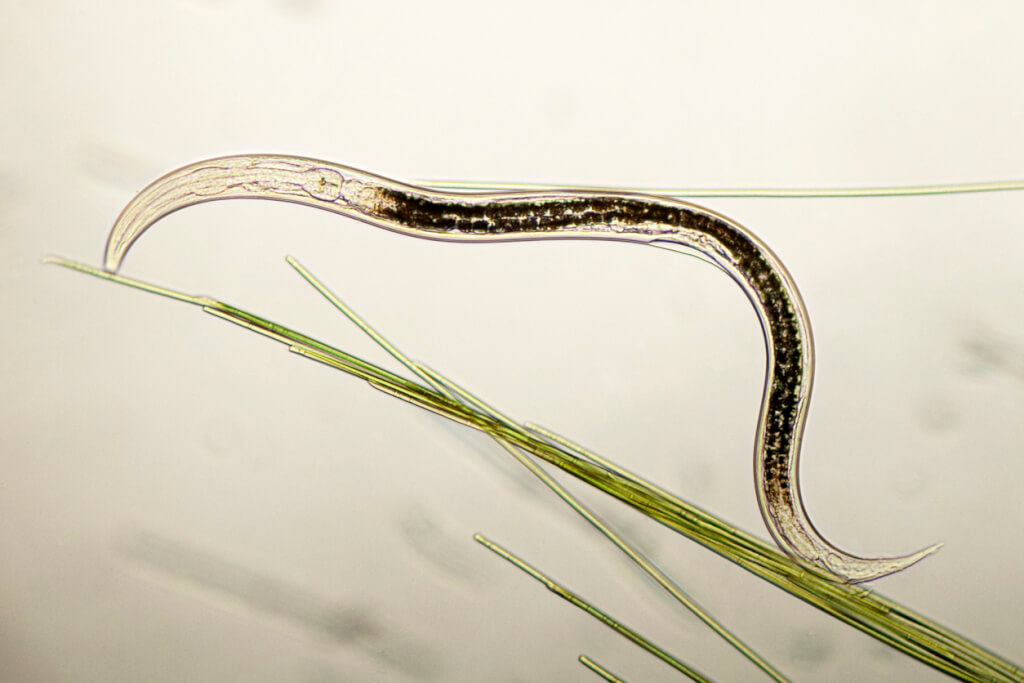Scientists resurrect animals that were frozen for 46 years in Siberia
Scientists have resurrected tiny extinct animals called nematodes. They were frozen in the permafrost of Siberia for 46 years, reports VICA.

Photo: IStock
Nematodes, or roundworms, are a highly adaptable group of wavy animals that are often microscopic in size, although some species can be seen with the naked eye. Many nematodes have evolved the ability to survive in freezing temperatures by engaging in what is known as cryobiosis. In this state, they essentially shut down their metabolic systems and turn into dried husks that can be resuscitated once favorable conditions return.
The microscopic animals have been successfully brought out of suspended animation after researchers found them in frozen soil that borders the Kolyma River in northern Siberia. Radiocarbon analysis has shown that they come from a prehistoric era, when Neanderthals still roamed the world. They are said to belong to a functionally extinct species called Panagrolaimus kolymaensis, previously unknown to science.
On the subject: Frozen zoo: how scientists are trying to save animals from extinction
“The striking discovery is important for understanding evolutionary processes because the life span of these organisms may span millennia, and the long-term survival of individuals could lead to the revival of extinct species,” says the study, published July 20 in the journal PLoS Genetics.
“Their evolution was literally suspended for 40 years,” wrote Philipp Schiffer, an evolutionary biologist at the University of Cologne and co-author of the study.
“We're now comparing them to species of the same genus that my team collects around the world,” he continued, noting that he is currently conducting field research in the Australian outback. “By studying their genomes, we hope to understand a lot about how these populations have changed over the past 40 years.”
Scientists have resurrected many organisms that existed in the distant past, including bacterial species that lived at least 25 million years ago and left viable spores inside an amber fossil. Indeed, some of the authors of the new study have previously revived nematodes found in permafrost in the Yakutsk region of Russia that may have been 41 years old.
Waking up after hard times
Now Schiffer and his colleagues, having discovered P. kolymaensis in the permafrost of Siberia, have extended the timeline by several millennia. According to radiocarbon analysis of ancient plant material in the samples, the nematodes were found in permafrost formations along the Kolyma River, where fossil burrows of Arctic ground squirrels have been preserved, dating from 45 to 839 years old.
Like the article? Support ForumDaily!?
Fortunately, it didn't take much persuasion for nematodes to start squirming and producing modern offspring, despite being dormant at the end of the last ice age and the subsequent rise of human civilization. The team has grown over 100 generations of P. kolymaensis in the lab, with each new generation living between 8 and 12 days.
“Basically, you just need to get the worms into the right conditions, on an agar plate with some bacteria, some humidity and room temperature,” Schiffer explained. “Then they just start crawling around, and then they multiply.” In this case it is even easier, since it is a completely female (asexual) species. They don't have to find males and have intercourse, they just start laying eggs that develop."
The idea that an animal could pass out for a geological era only to wake up and start reproducing sounds like something at the level of science fiction. But a new study suggests that nematodes and possibly other hardy species used this superpower to get through hard times. The findings provide a window into the deep past and also raise questions about how organisms will adapt to future stresses, including those that humans will create.
You may be interested in: top New York news, stories of our immigrants, and helpful tips about life in the Big Apple - read all this on ForumDaily New Y
“Cryptobiosis is at the intersection of life and death,” Schiffer concluded. “This allows species to survive in very extreme conditions. Studying this process gives us the opportunity to understand how species do this at the genetic and biochemical levels. Naturally, as many habitats become extreme, we can learn a lot here about how species are able to evolve during global change."
Read also on ForumDaily:
11-year-old millionaire hosts her 'retirement' party
In California, sea lions made a commotion on the beach: they barked and ran at tourists
Subscribe to ForumDaily on Google NewsDo you want more important and interesting news about life in the USA and immigration to America? — support us donate! Also subscribe to our page Facebook. Select the “Priority in display” option and read us first. Also, don't forget to subscribe to our РєР ° РЅР ° Р »РІ Telegram and Instagram- there is a lot of interesting things there. And join thousands of readers ForumDaily New York — there you will find a lot of interesting and positive information about life in the metropolis.











